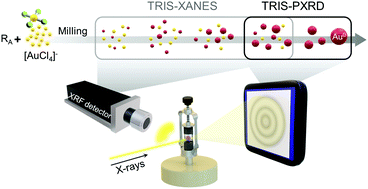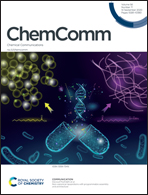Tandem X-ray absorption spectroscopy and scattering for in situ time-resolved monitoring of gold nanoparticle mechanosynthesis†
Abstract
Current time-resolved in situ approaches limit the scope of mechanochemical investigations possible. Here we develop a new, general approach to simultaneously follow the evolution of bulk atomic and electronic structure during a mechanochemical synthesis. This is achieved by coupling two complementary synchrotron-based X-ray methods: X-ray absorption spectroscopy (XAS) and X-ray diffraction. We apply this method to investigate the bottom-up mechanosynthesis of technologically important Au micro and nanoparticles in the presence of three different reducing agents, hydroquinone, sodium citrate, and NaBH4. Moreover, we show how XAS offers new insight into the early stage generation of growth species (e.g. monomers and clusters), which lead to the subsequent formation of nanoparticles. These processes are beyond the detection capabilities of diffraction methods. This combined X-ray approach paves the way to new directions in mechanochemical research of advanced electronic materials.



 Please wait while we load your content...
Please wait while we load your content...